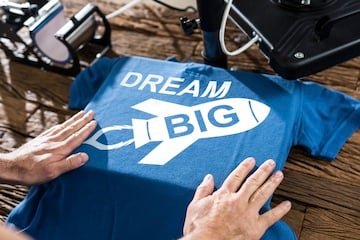Small and midsized ecommerce businesses can benefit from lifecycle marketing and a strategic approach to engaging shoppers.
What follows is a shopper lifecycle marketing framework for an online store selling niche print-on-demand t-shirts. Each step includes the framework and implementation details.
- Attraction
- Purchase
- Fulfillment
- Retention
- Reorder
Attraction
The “attraction” step aims to introduce the store, products, or unique value proposition to shoppers amid a crowded digital marketplace.
An ecommerce marketer might use several channels and features to achieve this end, such as:
- Content marketing. Shoppable videos and engaging blog posts powered by search engine optimization and structured data markup for rich snippets.
- Advertising. Programmatic ads with AI-driven targeting on Google Ads, Meta Ads, and similar.
- Social media. Emerging platforms, influencer partnerships (Shopify Colabs), and social commerce features on X, TikTok, Instagram, and Reddit.
- Marketplace. Presence on Amazon and Etsy. Use social commerce on Facebook Shops, Instagram Shopping, and products on X.
Here are the t-shirt shop’s implementation steps:
- The shop used Semrush to identify 4,200 target keyword phrases. These keywords are transformed into articles using an automation built with Zapier, ChatGPT, and Midjourney. A marketer identifies key points, AI drafts the blog article, and a human edits it.
- The store changed content management systems to improve technical SEO.
- Ads on Meta, Google, X, and various email newsletters.
- The store used Shopify Collabs to connect with influencers.
- The business is launching on X and Pinterest. Using another Zapier automation, the shop repurposes a single article into 15 social media posts and schedules them weeks in advance.
The site includes email capture on all its blog pages, so subscriptions are the top performance indicator, but site traffic and ad engagement are also measured.
Purchase
The “purchase” step aims to convert shoppers into customers through a seamless and secure purchasing experience.
In this step, the business collects a customer’s email address, physical address, and, if possible, permission to send text messages.
Ecommerce marketers typically excel at this step via the following tactics.
- An optimized online store. User-friendly product pages, streamlined checkout, and mobile optimization.
- Marketplace optimization. Using Amazon or similar to close the deal.
- Email. Cart abandonment reminders, limited-time offers, and similar to get every order.
- SMS. Offer text message order confirmation, delivery tracking, and special offers.
At this step, the t-shirt shop relies heavily on Shopify, its ecommerce platform. The shop can offer a variety of payment and delivery options and email and SMS for all transactional messages. It uses an “opt-out” approach to email marketing.
Fulfillment
It sounds simple, but it can be difficult. An ecommerce marketer must focus on fulfilling orders and the overall purchase experience. This typically involves communication.
- Set up order confirmations and shipping updates via email or SMS.
- Offer customer support via AI-powered chatbots, email, and telephone.
- Use social media to address customer service inquiries.
The t-shirt shop faced challenges at this stage because it uses print-on-demand services to fulfill orders. The company took a few steps to help.
- Set delivery expectations on every product page and the post-purchase email sequence.
- Send incoming messages immediately to the customer support person.
- Implemented an AI chatbot in 2025.

The t-shirt shop lets customers know it might take 10 days to fulfill the order. Click image to enlarge.
Retention
The “retention” phase in this shopper lifecycle marketing framework engages customers post-purchase to encourage reorders and referrals. Tactics include:
- Email and SMS to offer loyalty program updates and exclusive offers.
- Email newsletter to keep shoppers interested in the store’s content.
- Referral programs to incent shoppers to share products or content with friends.
- Review requests, encouraging testimonials and ratings.
- Social media to develop community.
This store is launching a program where customers earn points for purchases, reviews, and social shares. Shoppers can use the points to make additional purchases. The shop also has a weekly email newsletter.
Reorder
When she returns for a repeat purchase, the goal should be to recognize the shopper and make the order even better. But it takes work to get that subsequent purchase.
With this in mind, ecommerce marketers might try:
- Retargeting ads aimed at previous customers.
- Personalized product-focused email marketing.
- Targeted product placement in an email newsletter.
- SMS deals and discounts.
- Bonus loyal points for each order.
Here, the t-shirt shop uses its newsletter, ad retargeting, and email promotions to help garner a second sale. When a shopper completes an additional purchase, the shop sends an email sequence to recognize the loyalty.
Lifecycle Advantage
An ecommerce lifecycle marketing framework provides a roadmap for shopper engagement, which should drive both initial and repeat sales.





